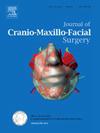Deep learning for orbital fracture detection and reconstruction: A systematic review on diagnostic accuracy and surgical planning
IF 2.1
2区 医学
Q2 DENTISTRY, ORAL SURGERY & MEDICINE
引用次数: 0
Abstract
Objective
To systematically review the efficacy of deep learning (DL) models in detecting and reconstructing orbital fractures based on computed tomography (CT) imaging, assessing their diagnostic accuracy, processing time, and role in surgical planning.
Method
A systematic search was conducted in PubMed, Embase, Web of Science, Wiley, Cochrane, and additional sources. Five studies met the inclusion criteria. Performance was evaluated using accuracy, sensitivity, specificity, area under the curve (AUC), Dice Similarity Coefficient (DSC), and Intersection over Union (IoU).
Results
Deep learning models, particularly U-Net, GAN-based approaches, and SPAK-guided architectures, demonstrated high accuracy in fracture detection and reconstruction. DenseNet achieved the best fracture identification performance (AUC = 0.99). SPAK-based models improved reconstruction precision, reducing geometric errors. Automated segmentation reduced processing time from 25 min to less than 5 min per case, and GAN-based models optimized surgical planning, lowering it to 1.5 min.
Conclusions
Deep learning enhances orbital fracture diagnosis and reconstruction accuracy, significantly reducing segmentation and planning time. However, further comparative studies are needed to standardize methodologies and validate clinical applicability.
深度学习用于眼眶骨折检测和重建:诊断准确性和手术计划的系统综述。
目的:系统回顾深度学习(DL)模型在基于计算机断层扫描(CT)成像的眶骨折检测和重建中的效果,评估其诊断准确性、处理时间和在手术计划中的作用。方法:系统检索PubMed, Embase, Web of Science, Wiley, Cochrane和其他来源。5项研究符合纳入标准。通过准确性、灵敏度、特异性、曲线下面积(AUC)、Dice Similarity Coefficient (DSC)和Intersection over Union (IoU)来评估其性能。结果:深度学习模型,特别是U-Net、基于gan的方法和spak引导的架构,在裂缝检测和重建方面表现出了很高的准确性。DenseNet的裂缝识别性能最佳(AUC = 0.99)。基于spak的模型提高了重建精度,减少了几何误差。自动分割将处理时间从每例25分钟减少到5分钟,基于gan的模型优化了手术计划,将其降低到1.5分钟。结论:深度学习提高了眶骨折诊断和重建的准确性,显着减少了分割和计划时间。然而,需要进一步的比较研究来规范方法和验证临床适用性。
本文章由计算机程序翻译,如有差异,请以英文原文为准。
求助全文
约1分钟内获得全文
求助全文
来源期刊
CiteScore
5.20
自引率
22.60%
发文量
117
审稿时长
70 days
期刊介绍:
The Journal of Cranio-Maxillofacial Surgery publishes articles covering all aspects of surgery of the head, face and jaw. Specific topics covered recently have included:
• Distraction osteogenesis
• Synthetic bone substitutes
• Fibroblast growth factors
• Fetal wound healing
• Skull base surgery
• Computer-assisted surgery
• Vascularized bone grafts

 求助内容:
求助内容: 应助结果提醒方式:
应助结果提醒方式:


